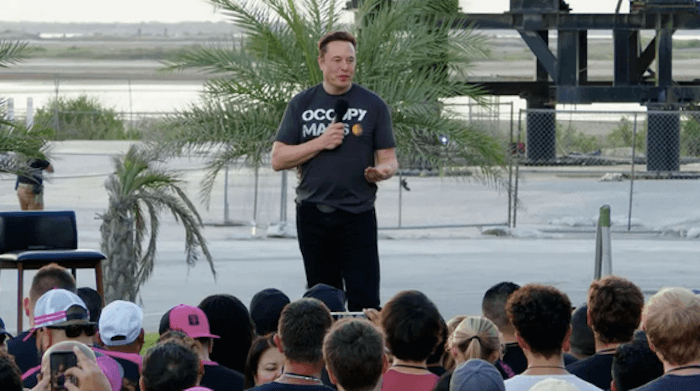On Thursday 25 August, the telecommunications company T-Mobile announced an agreement with Elon Musk’s SpaceX to provide coverage through the Starlink satellite network in areas without coverage. The connectivity plan is called Coverage Above and Beyond
At an event in Texas, Musk was in charge of making the announcement along with a T-Mobile executive, and explained that the phones will connect directly to the satellite network and will be able to send text messages and photos.
“It won’t have the kind of bandwidth that a Starlink terminal would have, but it will allow texting, pictures and, if there aren’t too many people in the cellular zone, you’ll even be able to watch a little video,” said Musk.
T-Mobile CEO Mike Sievert said he expects the new service to be free on most cellular plans, although there could be a fee for users of low-cost packages. There are about 500,000 square miles (1.3 million square kilometers) in the United States that aren’t covered by any cellular network, Sievert said.
The important thing about this is that it means there will be no dead zones anywhere in the world for your cell phone.
Elon Musk

According to Space, Coverage Above and Beyond will require Starlink Version 2, which is expected to debut next year. Version 2 will be 23 feet (7 meters) long and weigh 1.25 tons (1,130 kilograms), compared to the current 660 pounds (300 kg). Because of Version 2’s size, SpaceX will need to launch them on Starship its next-generation transportation system, rather than the Falcon 9.
In July, SpaceX launched from Cape Canaveral Air Force Base in Florida a rocket carrying 53 compact broadband repeater stations for the Starlink Internet network, which is nearing 3,000.
The reusable portion of the Falcon 9 rocket that put these satellites into space landed on a drone ship in the Atlantic Ocean shortly after completing its task. The new Starlink satellites were dropped into an orbit between 144 miles and 209 miles in altitude and will use onboard propulsion to reach a circular orbit 540 kilometers above Earth.
This is an open invitation to carriers around the world. Please get in touch with us, and we’d love to partner with you and enable this globally.
Elon Musk
This is the 49th launch of the Starlink mission and the first of four launches scheduled for July by SpaceX for its space-based Internet network. These latest 53 bring the total number of Starlink Internet satellites to 2,759, including prototypes and test units that are no longer in service.
After reaching their operational orbit, the satellites will enter commercial service and begin transmitting broadband signals to consumers, who can purchase the Starlink service and connect to the network with a SpaceX-provided ground terminal.
According to specialized media, the network has more than 250,000 users worldwide, including the Government of Ukraine, to which SpaceX has sent two shipments of terminals to provide Internet access during the Russian invasion. SpaceX has permission to launch 12,000 satellites, but is seeking approval to deploy up to 30,000 more.













